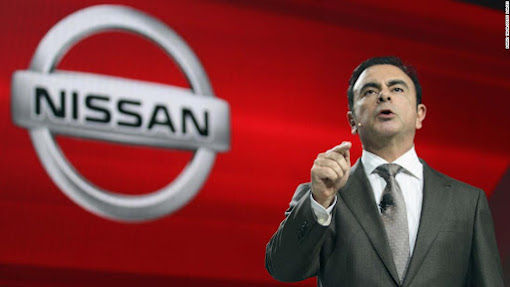Managing Change - Blog 4
Introduction
Due to the continual changes
that occur and the uncertain environment, organizations are involved in change
management. While leaders establish the organization's direction, those in
middle management and on the front lines, as well as team leaders, play
critical roles (Braley, 2021). Changes occur because of a firm experiencing a
business expansion, relocation, slowdown, or new product trial. A company may
also be through a merger and acquisition, which for small companies implies
that a larger company will take over the business or that the company's
industry position will be strengthened by folding its activities (Mahyew, 2022).
Although change is
unavoidable, there is a tendency to resist it. Change creates potential
workplace uncertainties, as well as personal losses in terms of authority,
reputation, remuneration, and job quality (Lunenburg, 2010). People who resist
change are more likely to avoid problems that occur because of the changes;
they prefer to remain in their comfort zone since it is safer than facing new
challenges.
Lewin’s Change Model
Figure
1.
Lewin’s Change Management Template (Practical Psychology, 2022).
Kurt Lewin is considered the
founder of change management. One of the popular theories of his
“unfreeze-change-refreeze” method is widely regarded as the base outlook to
change management (Cummings et al., 2015).
This theory predicts the
outcome of changes by imposing constraints on collective and individual
behavior. Employees are inspired and directed toward the future state by the
driving factors. The restraining factors highlight potential opposition to
change and are the primary barriers to changing practices (Sarayreh et al.,
2013).
'Unfreezing,' or being
motivated to change; This first stage stimulates the modification or
elimination of existing factors to maintain the habit, and it suggests that
this stage develops or eliminates current individual ideas, mindsets, and
reflections, as well as understanding why the change was necessary. The second
phase is 'change,' which is an activity that involves implementing the changes
and evaluating the process through trial-and-error, examining the results, and adjusting
attain efficiency. Finally, the 'refreezing' stage suggests that the new
alterations become new habits, self-concepts, and identities for individuals
working in the company, and that these changes will be implemented indefinitely
(Wirth, 2004).
Benefits and Limitations
This change model can be used
to analyze individual or organizational behavior and to determine what needs to
change. Because the theory is straightforward, with three key steps to follow,
this approach is simple to understand and apply in an organization. Aside from
that, this model is intended to explain why people resist change and to
investigate the factors that cause people to change their acceptance and
support (Hussain et al., 2018).
However, individuals continue to believe that this model is too simplistic and lacks the details to accomplish meaningful change. Another point is that the model's form is rigid and does not reflect contemporary times; it only freezes behaviors that will need to be unfrozen soon owing to technological developments. Some think that Kurt Lewin's change theory is slightly out of date (Galli, 2018).
Real Life Example
Figure
2.
Nissan CEO Carlos Ghosn (CNN, 2018).
Nissan Motor Company was on
the verge of bankruptcy, with tremendous debt and a gradually declining market
share. To alleviate its financial load, they created a strategic alliance with Carlos
Ghosn, former CEO of Renault. Simultaneously, Renault wanted to boost its
market-share. By making the transition from turning around enterprises to
profit-making. He also develops efficient change management approaches to solve
various organizational challenges, as well as increased employee engagement
through effective communication and positive reinforcement. During the
'refreezing' stage, he implemented performance-based pay, encouraged employees
to use modern approaches, and created an open feedback system to advise and
help people in enhancing workplace adaptability (Havard Business Review, 2002).
Conclusion
In an organization, there will
always be changes, which means that change is inevitable. Leaders must create
the correct direction for employees to adapt for them to grasp and effectively
execute changes in the business. However, individuals determine their ability
to adapt to changes, which is why leaders must analyze and make such
adjustments for them to be adaptive and finally attain the company's goals.
References
Braley, N. (2021). Why
Change Management Is the Most Critical Leadership Skill. Forbes. https://www.forbes.com/sites/forbescommunicationscouncil/2021/11/19/why-change-management-is-the-most-critical-leadership-skill/?sh=5f42decb3f22
Cummings, S., Bridgman, T.,
& Brown, K. G. (2015). Unfreezing change as three steps: Rethinking
Kurt Lewin’s Legacy for Change Management. Human Relations, 69(1),
33–60. https://doi.org/10.1177/0018726715577707
Havard Business Review. (2002).
Savings The Business Without Losing The Company. Havard. https://hbr.org/2002/01/saving-the-business-without-losing-the-company
Hussain, S. T., Lei, S.,
Akram, T., Haider, M. J., Hussain, S. H., & Ali, M. (2018). Kurt
Lewin's change model: A critical review of the role of leadership and employee
involvement in organizational change. Journal of Innovation &
Knowledge, 3(3), 123–127. https://doi.org/10.1016/j.jik.2016.07.002
Galli, J., B. (2018). Change
management models: A comparative analysis and concerns. IEEE Engineering
Management Review, 46(3), 124–132. https://doi.org/10.1109/emr.2018.2866860
Lunenburg,
F. C. (2010, September). Forces for and resistance to organizational change. National
forum of educational administration and supervision journal (Vol. 27,
No. 4, pp. 1-10).
Mahyew, R. (2022). Change
in Senior Leadership & Its Effect on Achieving Business Goals. Chron. https://smallbusiness.chron.com/reorganization-mean-corporation-60100.html
Sarayreh,
B. H., Khudair, H., & Barakat, E. A. (2013). Comparative study: The Kurt
Lewin of change management. International Journal of Computer and Information Technology, 2(4), 626-629.
Wirth,
R. A. (2004). Lewin/Schein’s change theory. Iowa State University Journal. https://citeseerx.ist.psu.edu/viewdoc/download?doi=10.1.1.486.5728&rep=rep1&type=pdf





Comments
Post a Comment